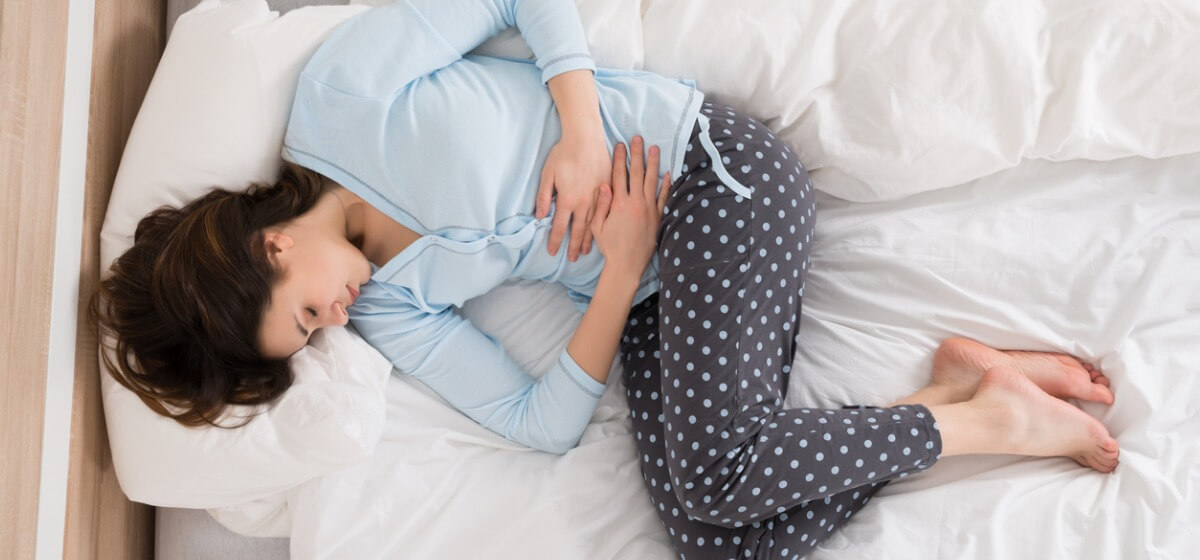What Is Endometriosis?

Endometriosis is a disorder in which tissue called endometrium, which normally lines the inside of the uterus, grows outside of it. This abnormal tissue growth can affect the ovaries, fallopian tubes and the tissue that lines the pelvis. Only in rare cases does the endometrial tissue grow beyond the pelvic organs.
Although it’s not in the uterus, this endometrial tissue continues to follow the normal menstrual cycle, thickening, breaking down and bleeding each month. However, since the tissue cannot exit the body, it’s trapped, causing a number of issues.
If the condition affects the ovaries, cysts (known as endometriomas) may develop. In addition, other tissues irritated by the endometrium can be scarred or develop adhesions, which are bands of fibrous tissue that can cause organs and pelvic tissues to stick together.
Endometriosis Symptoms and Signs
Pelvic pain, commonly associated with the menstrual period but more intense than normal cramping, is the main symptom of endometriosis. Women tend to report that the pain increases over time and extends several days into their period as well. Other signs and symptoms include:
- Excessive bleeding or bleeding between periods
- Pain during or after intercourse
- Painful urination or bowel movements during menstruation
- Infertility
- Fatigue
- Constipation or diarrhea
- Bloating and nausea
The amount of pain a woman experiences and the extent of her endometriosis don’t necessarily go hand in hand. A mild case of the condition may cause severe pain, while an advanced case can cause little to no pain.
Endometriosis Risk Factors
This condition is most common among women who are in their 30s and 40s. However, it can affect women at any time after they begin having a menstrual period. Other reproductive-cycle and non-reproductive-cycle factors may increase your chances of developing endometriosis.
Reproductive-Cycle Risk Factors
- Early onset of menstruation (monthly period)
- Short periods (less than 28 days apart)
- Long periods (lasting more than seven days)
- Never giving birth
- Other uterine-related medical conditions, particularly if they block menstrual blood flow
- Later-than-average onset of menopause
Additional Endometriosis Risk Factors
- Low body mass index (BMI)
- Exposure to higher-than-average levels of estrogen throughout life, or currently having high levels of estrogen in your body
- Family history of endometriosis
Endometriosis: Related Conditions
- Infertility: As many as 40% of women who’ve had trouble getting pregnant have endometriosis, according to the American College of Obstetrics & Gynecology. Managing your endometriosis can be an important step toward getting pregnant.
- Polycystic ovarian syndrome/ovarian cysts: Endometriosis can sometimes be confused with this condition. Some women may have both endometriosis and polycystic ovarian syndrome/ovarian cysts.
- Ovarian cancer: Very few women develop this type of cancer to begin with. However, women who have endometriosis are slightly more likely than the general population to develop ovarian cancer. Women who’ve had endometriosis can also develop a rare type of cancer called endometriosis-associated adenocarcinoma.
Endometriosis Doctors at Baptist Health
While being diagnosed with female endometriosis can lead to uncertainty, it’s important to know that the condition is very treatable. Baptist Health has endometriosis doctors on staff who have expertise in this area and can work with you to determine the most appropriate treatment.
Learn more about the condition and our doctors who treat endometriosis at Baptist Health.



